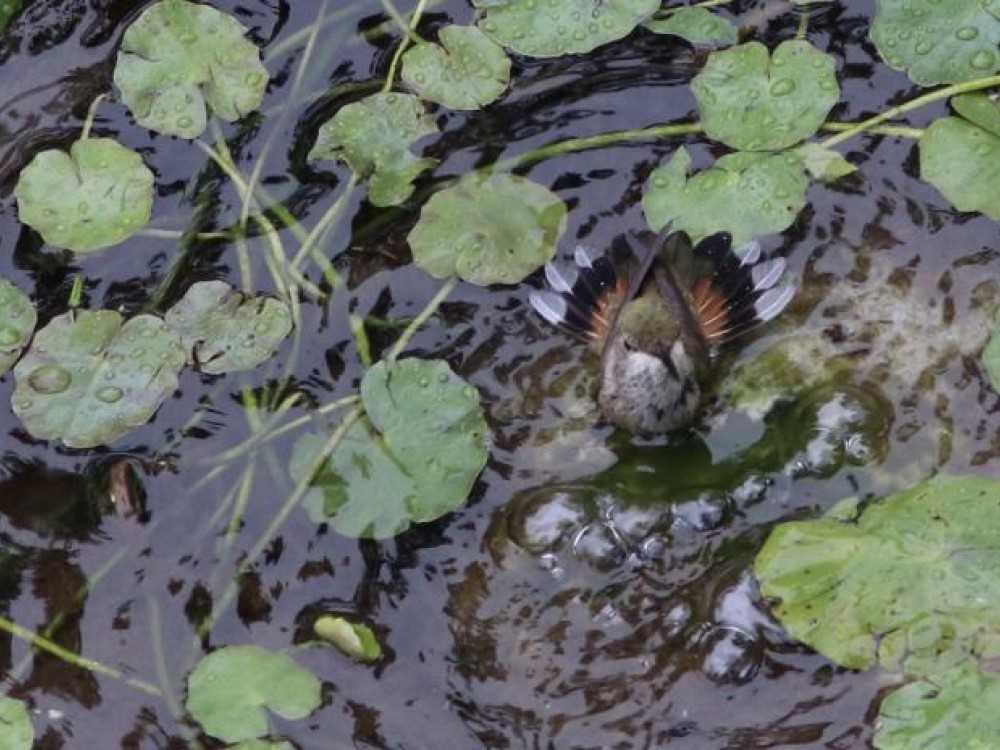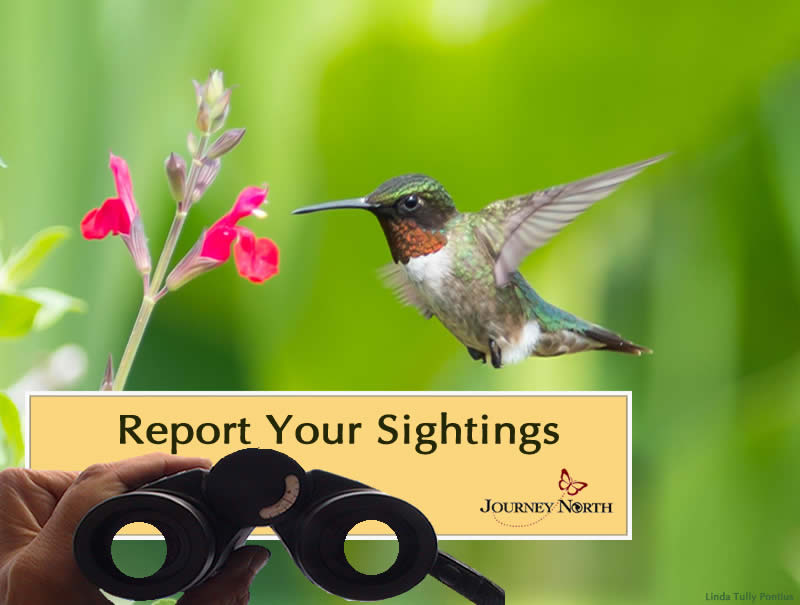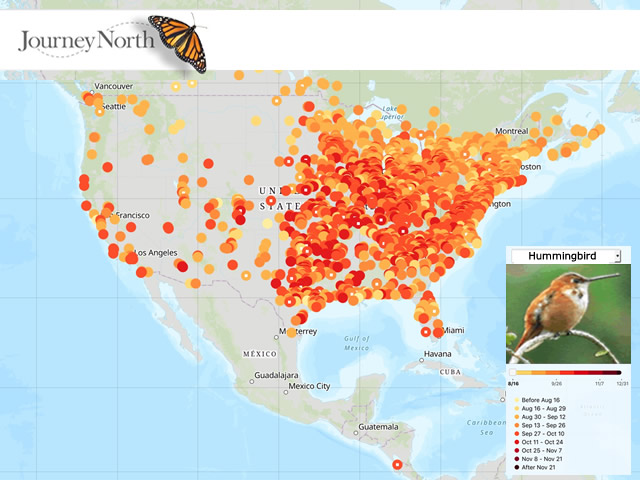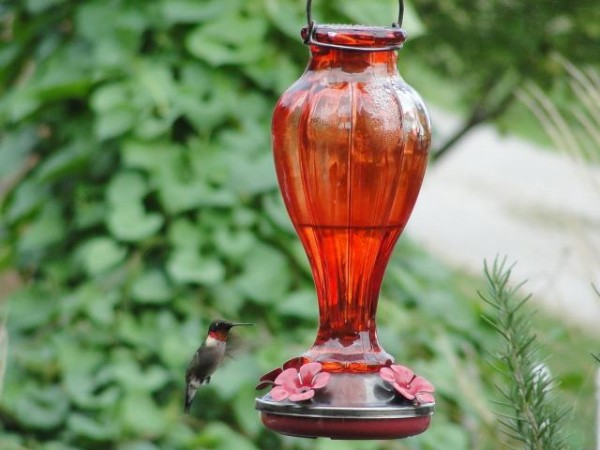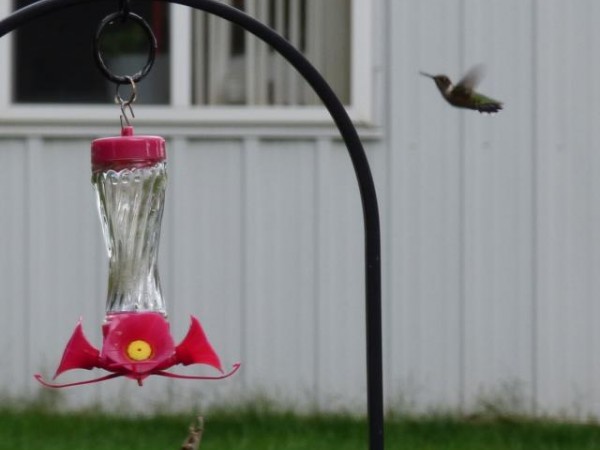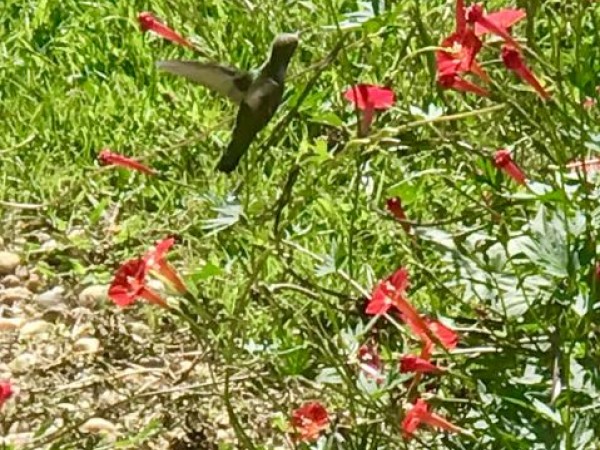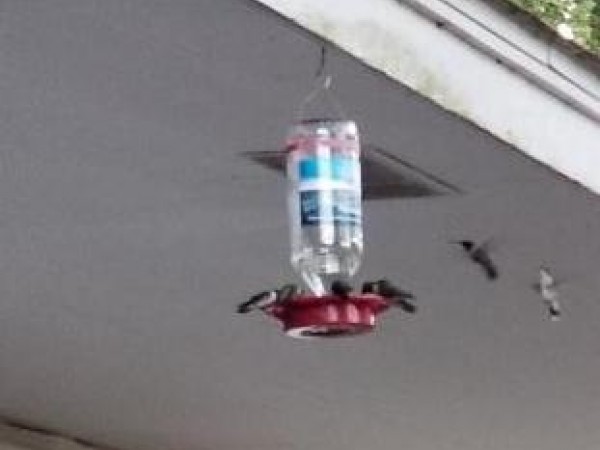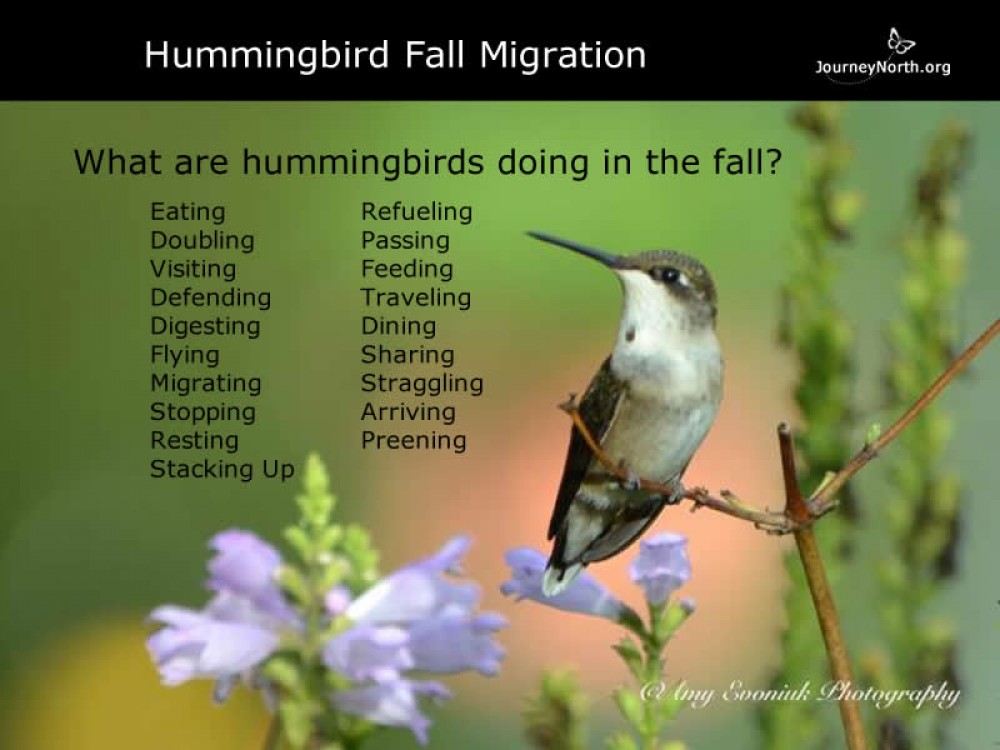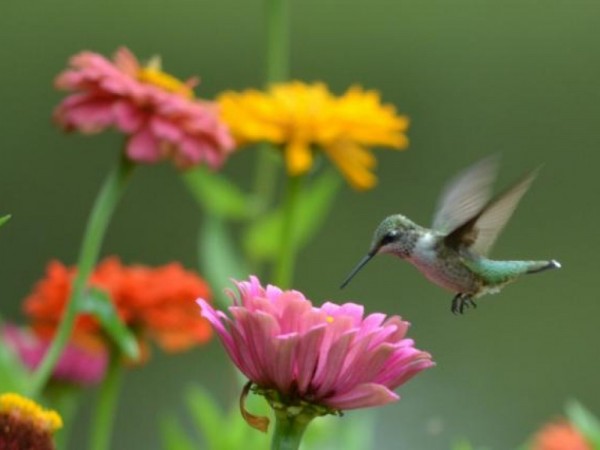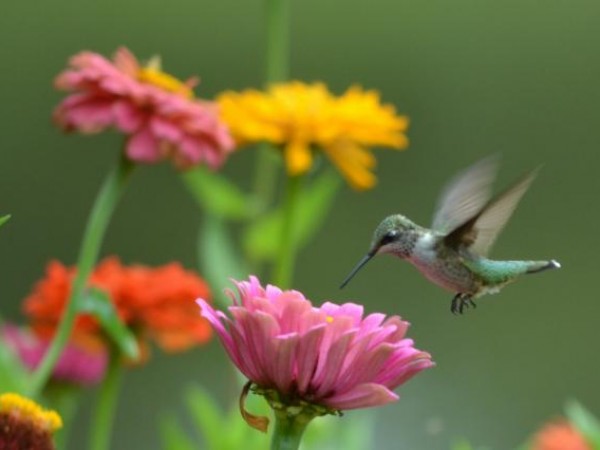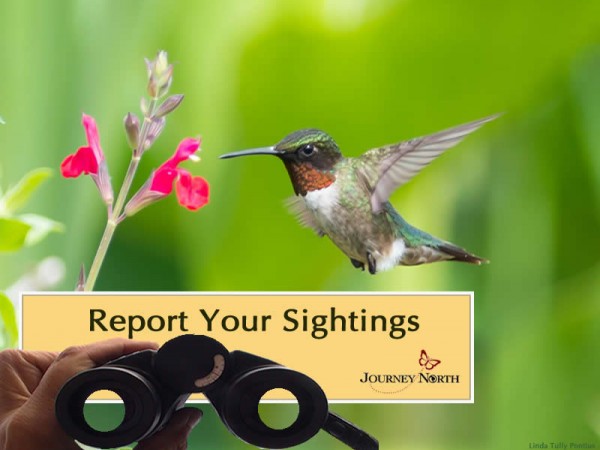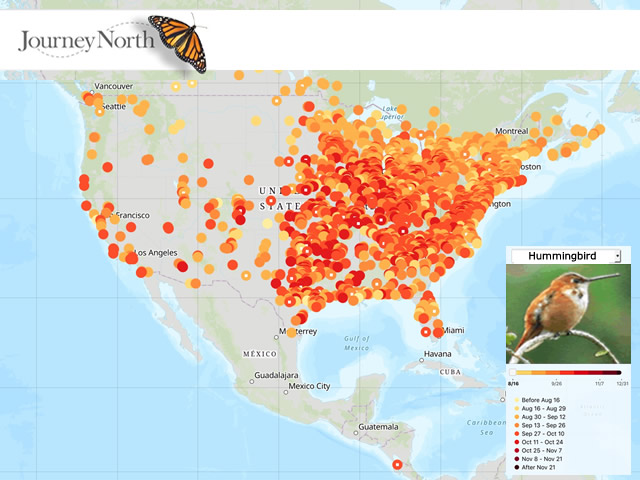Still Seen in the North. Greater Numbers Observed Along the Gulf States.
Are we starting to see a surge of sightings in southern U.S. states? Keep reporting to Journey North.
Preparing For Flight
What a great cover photo caught by Journey North citizen scientist, Selvi. Compared to other birds, hummingbirds do not frequently use birdbaths or other water sources to drink. They seek liquid from the nectar of flowers and sugar water in feeders. That said, they do need water to bathe to keep their plumage free of debris and ready for their long journey south.
Moving in Waves
People reported hummingbirds coming and going this week in response to wind and weather.
From Mount Cory, OH: Emily commented "This male ruby throat was still here on September 16. With a light north wind today (9/17) we have not seen him, so he must have decided to continue his journey south. Still one female left." (09/16/2019)
From Melbourne, IA: Linda noted, "1 adult male and 2 juvie males showed up today at the feeders and kept chasing each other off. I think they arrived just ahead of the storm front..." (09/18/2019)
Fall is here. Flowers are fading and night temperatures are dropping. Migrating hummers briefly stop by to refuel before moving on. In places where sightings are diminishing, people were on the lookout for hummingbird stragglers.
From West Chester, PA: Katy observed, "Pretty sure these are migrating birds since our summer families seemed to move on around September 3rd. We have one or two at a time in morning and evening. This is the latest date I’ve ever documented hummingbirds in our yard 9/19/19." (09/19/2019)
Surging Along Gulf States Yet?
Are we starting to see a surge of sightings in southern U.S. states? Keep reporting to Journey North.
From Hearne, TX: Cynthia "saw 2 ruby throated, possibly 3. 4 feeders out but [final count of 15] hummers are concentrating on just 1 feeder." (09/21/2019)
From Cut Off, LA: Connie reported having "six ruby throats fighting for three feeders. Two are males, two are juvenile males, one is a female and one other hummer. They are also going to my orange cigar plants. (09/18/2019) link to observation
From Port Lavaca, TX: Sandy "counted approximately 200" hummingbirds at her feeder. (09/17/2019) link to observation
Fewer Mid-day Sightings
Several people wondered why activity levels tend to peak in the evenings and mornings, and remain relatively quiet during the day. Ornithologist Laura Erickson explains:
"Hummingbirds are migrating by day. They land while it’s still afternoon if they see a good place to fuel up for a few hours. Then they find a safe place to sleep. They must also do a lot of feeding again in the morning before they take off. It's different for the local hummingbirds not yet on the move: Mid-day is when they can get the most insects and when most flowers are open so they can get natural foods. But locals also do the quick-energy feeding frenzy in the evenings and mornings."
Thanks for sharing your first-hand, backyard observations of North America's favorite birds! Please continue to tell us what you see.
Fall Migration 2019
Report at least once per week as long as hummingbirds are present. Do not report when you no longer see them.

